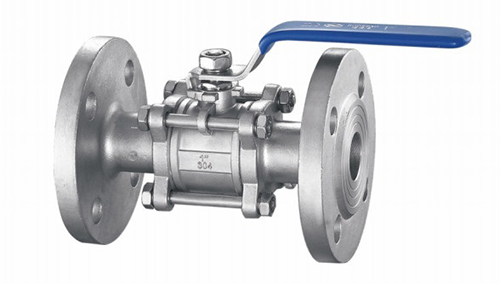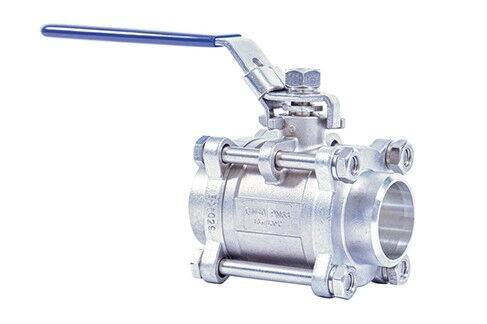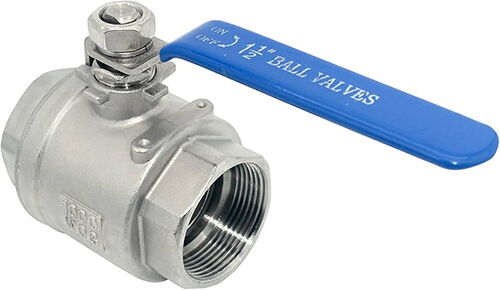Industrial valves are essential components in pipeline systems, widely used in various industries such as industrial production, energy transportation, and chemical processing. Not only do industrial valves effectively control the flow of fluids, but they also ensure the safe and stable operation of the system. The method of connection for a valve is an important factor that affects installation, disassembly, sealing, and reliability. Different connection methods are suitable for different pipeline conditions and operating environments, so choosing the right valve connection is crucial. In this article, we will explore three common valve connection methods: flange connection, welding connection, and threaded connection. Through a detailed analysis of their characteristics, advantages, disadvantages, applicable scenarios, and how to select the appropriate connection, we aim to provide a comprehensive understanding of valve connections and assist in selecting the correct industrial valve for your needs.
Flange connection is one of the most common methods used to connect industrial valves. This method connects the valve's flange with the pipeline's flange and fastens them together using bolts, forming a sealed interface. Valves with flange connections are easy to install, offer excellent disassembly capability, and provide good sealing performance, making them widely used in various industrial fields.

The main characteristic of flange connection is its ease of installation, disassembly, and maintenance. The industrial valve's flange is connected to the pipeline's flange by bolts, with sealing achieved using gaskets. Flange connections can withstand high pressure and temperature fluctuations, making them widely used in applications requiring high pressure and temperature resistance. Additionally, flange connections allow for easy maintenance, reducing industrial valve downtime.
Ease of Disassembly: Flange connections offer excellent disassembly, allowing for easy industrial valve or pipeline component replacement or maintenance, ideal for equipment requiring regular inspection.
Wide Application Range: Flange connections can be used for valves of various specifications and pressure ratings, suitable for a wide range of pipelines and operational conditions.
Good Sealing: Flange connections are often equipped with sealing gaskets to prevent leaks, ensuring system tightness.
High Pressure and Temperature Resistance: Flange connections can withstand high pressure and temperature, making them ideal for industries like oil, chemicals, and power.
Despite its many advantages, flange connection also has some drawbacks:
Heavy Weight: Due to the large flanges required, flange connections can increase the industrial valve's weight, which may impact installation convenience.
Large Space Requirement: Flange connections require a certain amount of installation space, which may not be suitable for areas with limited space.
High Cost: The production cost of flanges and gaskets is relatively high, and installation requires more time and labor, making flange connections more expensive.
Leakage Risk: With multiple sealing surfaces, flange connections are more prone to leaks, especially in high-temperature, high-pressure, or corrosive environments.
Flange connections are suitable for various high-strength connection applications and perform well in the following situations:
Frequent Disassembly Equipment: Such as industrial valves, pumps, and instruments, which need regular maintenance and replacement. Flange connections provide convenient disassembly.
High Pressure and High Temperature Systems: Such as boiler systems, chemical pipelines, and power systems, which require high strength and heat resistance. Flange connections meet these demands effectively.
Large-Diameter Pipelines: Flange connections provide sufficient strength and stability for large-diameter pipelines, adapting to different pressure and temperature conditions.
Welding connection is a method where the industrial valve is permanently welded to the pipeline, creating a permanent joint. This connection method eliminates the need for additional fittings, reducing the risk of leakage, and is widely used in systems where high sealing performance is required.

The main feature of welding connection is its excellent sealing ability and ability to withstand high pressure and temperature. Since it is a permanent connection, welding provides stable performance throughout the system's operational life, avoiding the risks that may arise from disassembly or replacement. Welding connections are typically used for large diameter, high-pressure, high-temperature, and highly corrosive conditions.
Superior Sealing: The biggest advantage of welding connections is their sealing performance. Since the connection is directly welded together, the risk of leakage is almost eliminated, making it ideal for applications with strict sealing requirements.
High Strength: Welding connections can withstand higher pressures and temperatures, making them suitable for high-pressure and high-temperature pipeline systems, ensuring safe operation.
Less Affected by External Forces: Unlike flange connections, welding connections are not prone to loosening due to external forces, providing higher stability.
Corrosion Resistance: Welding connections are ideal for highly corrosive media because there are no gaps in the welded joint to allow corrosive substances to penetrate.
Non-Disassemblable: The main disadvantage of welding connections is that they cannot be disassembled, making repairs or replacements difficult if issues arise.
High Welding Requirements: Welding connections require specific techniques, and the quality of the weld directly impacts the reliability and safety of the connection. Any defects during welding can lead to leakage or rupture.
High Construction Difficulty: Welding requires specialized technicians and equipment, increasing the complexity of construction. After welding, inspections and non-destructive testing are needed, which adds to the cost and project duration.
Welding connections are primarily used in the following situations.
Long-Term Operation Systems: Such as oil and gas pipelines, which require stable, long-term operation. Welding connections provide high sealing and strength.
High Pressure and High Temperature Systems: Welding connections are ideal for high-pressure, high-temperature environments, such as steam pipelines and boiler systems.
Special Media: For acidic or highly corrosive media, welding connections prevent corrosion since they have no gaps.
Threaded connection uses threads to join valves to pipelines and is commonly used in small-diameter pipes or equipment that requires frequent disassembly. Threaded connections are easy to install and remove, making them popular in smaller devices and instruments.

The main characteristic of threaded connection is its ease of installation and disassembly, suitable for small-diameter pipes and valves that need frequent removal. The principle of threaded connection is that the valve and pipe are fixed by matching threads, with sealing ensured by the tightening force of the threads.
Easy Installation: Threaded connections are very simple to install, requiring no welding equipment or flanges. You only need to tighten the threads, making them ideal for small-diameter pipes and equipment.
Easy Disassembly: Threaded connections allow for easy disassembly and replacement, suitable for equipment that requires frequent inspection and replacement, such as instrument valves.
Low Cost: Threaded connections are cost-effective since they don't require flanges or welding equipment, making them ideal for small pipeline systems with limited budgets.
Suitable for Small-Diameter Pipelines: Threaded connections are particularly effective in small-diameter pipes, especially when high pressure and temperature are not a concern.
Poor Sealing: Compared to flange and welding connections, threaded connections have relatively poor sealing and are more prone to leakage.
Low Strength: Threaded connections are suitable for small-diameter pipes but are unable to withstand high pressure, making them less suitable for large-diameter pipes.
Not Suitable for Special Media: Threaded connections are not ideal for pipelines containing corrosive media, as the threads are more likely to be affected by corrosion, leading to leakage.
Threaded connections are mainly suitable for:
Small-Diameter Pipelines: Such as instrument valves, pressure gauges, filters, and other small devices, where sufficient sealing and strength are provided.
Frequent Disassembly Equipment: For equipment that requires regular inspection and cleaning, threaded connections allow easy removal and replacement.
Low-Pressure Systems: Threaded connections are suitable for low-pressure systems such as water pipes and gas lines.
When selecting a valve connection, several factors must be considered:
Pressure and Temperature: Different connection methods are suited for different pressure and temperature ranges. High-pressure and high-temperature systems require welding or flange connections, while low-pressure systems can opt for threaded connections.
Sealing Requirements: If the system demands strict sealing, welding and flange connections are better options, while threaded connections are suitable for less stringent sealing requirements.
Disassembly Needs: For valves requiring frequent disassembly and maintenance, flange and threaded connections are more suitable.
Installation Space: Flange connections require larger installation space, while welding and threaded connections are more flexible in confined areas.
The choice of valve connection plays a crucial role in various application scenarios. Flange, welding, and threaded connections each have their advantages and disadvantages and are suitable for different operational conditions and requirements. When selecting a valve connection, it is essential to consider factors such as pressure, temperature, sealing requirements, disassembly frequency, and installation space to ensure optimal valve performance and safety. A comprehensive understanding of these connection methods will help you make more informed and rational decisions during valve selection, improving system stability and operational efficiency.
